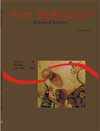Estresse devido ao transporte e à ação da benzocaína em parâmetros hematológicos e população de parasitas em matrinxã, <em>Brycon cephalus</em> (Günther, 1869) (Osteichthyes, Characidae)
Resumo
O objetivo deste trabalho foi avaliar os efeitos do transporte, sob diferentes concentrações de benzocaína, em parâmetros hematológicos e na população de parasitas de brânquias do matrinxã Brycon cephalus (Osteichthyes, Characidae). Trinta peixes (peso médio 1,0 kg) foram transportados em tambores plásticos de 200 L por quatro horas. Cada tambor foi preparado com uma concentração de benzocaína (B0 = 0 mg/L; B1 = 5 mg/L; B2 = 10 mg/L e B3 = 20 mg/L). Anteriormente ao carregamento dos tambores, cinco peixes foram amostrados para determinar a condição inicial. Outras três amostragens foram feitas posteriormente: na chegada, 24 e 96 horas após o transporte. Os peixes transportados sob efeito da benzocaína apresentaram menor resposta de fuga durante a captura comparado aos peixes do B0, sendo que os peixes do B3 mostraram dificuldade de manter o equilíbrio durante a viagem. Após o transporte, registraram-se os níveis mais elevados de cortisol plasmático, em todos os tratamentos, com retorno aos níveis iniciais após 24 horas. A glicemia elevou-se na chegada, em todos os tratamentos, e após 24 horas apenas os peixes transportados nas duas concentrações mais altas ainda não haviam recuperado os valores iniciais. Na chegada, a porcentagem de linfócitos decresceu, permanecendo neste patamar após 24 horas, sendo que os peixes do B2 e B3 não retornaram à condição inicial até o final do período experimental. Foi observado aumento da porcentagem de neutrófilos, desde a chegada até 24 horas após o transporte, em todos os tratamentos. Os peixes do B2 e B3 mantiveram elevadas as porcentagens de neutrófilos até 96 horas após o transporte. Na última coleta, constatou-se que o número do parasita branquial Piscinoodinium sp. havia aumentado nos peixes do B3. Foi possível observar que o uso da benzocaína contribuiu com a elevação da glicemia e dos níveis plasmáticos do cortisol após o transporte, sendo registrados efeitos negativos das duas concentrações mais altas em vários parâmetros hematológicos e no número de Piscinoodinium sp. aderido às brânquias. Concluiu-se, portanto que o uso da benzocaína não reduziu o estresse causado pelo transporte em matrinxãs, atuando inclusive como agente estressor adicional.Downloads
DECLARAÇÃO DE ORIGINALIDADE E DIREITOS AUTORAIS
Declaro que o presente artigo é original, não tendo sido submetido à publicação em qualquer outro periódico nacional ou internacional, quer seja em parte ou em sua totalidade.
Os direitos autorais pertencem exclusivamente aos autores. Os direitos de licenciamento utilizados pelo periódico é a licença Creative Commons Attribution 4.0 (CC BY 4.0): são permitidos o compartilhamento (cópia e distribuição do material em qualqer meio ou formato) e adaptação (remix, transformação e criação de material a partir do conteúdo assim licenciado para quaisquer fins, inclusive comerciais.
Recomenda-se a leitura desse link para maiores informações sobre o tema: fornecimento de créditos e referências de forma correta, entre outros detalhes cruciais para uso adequado do material licenciado.












1.png)




3.png)













